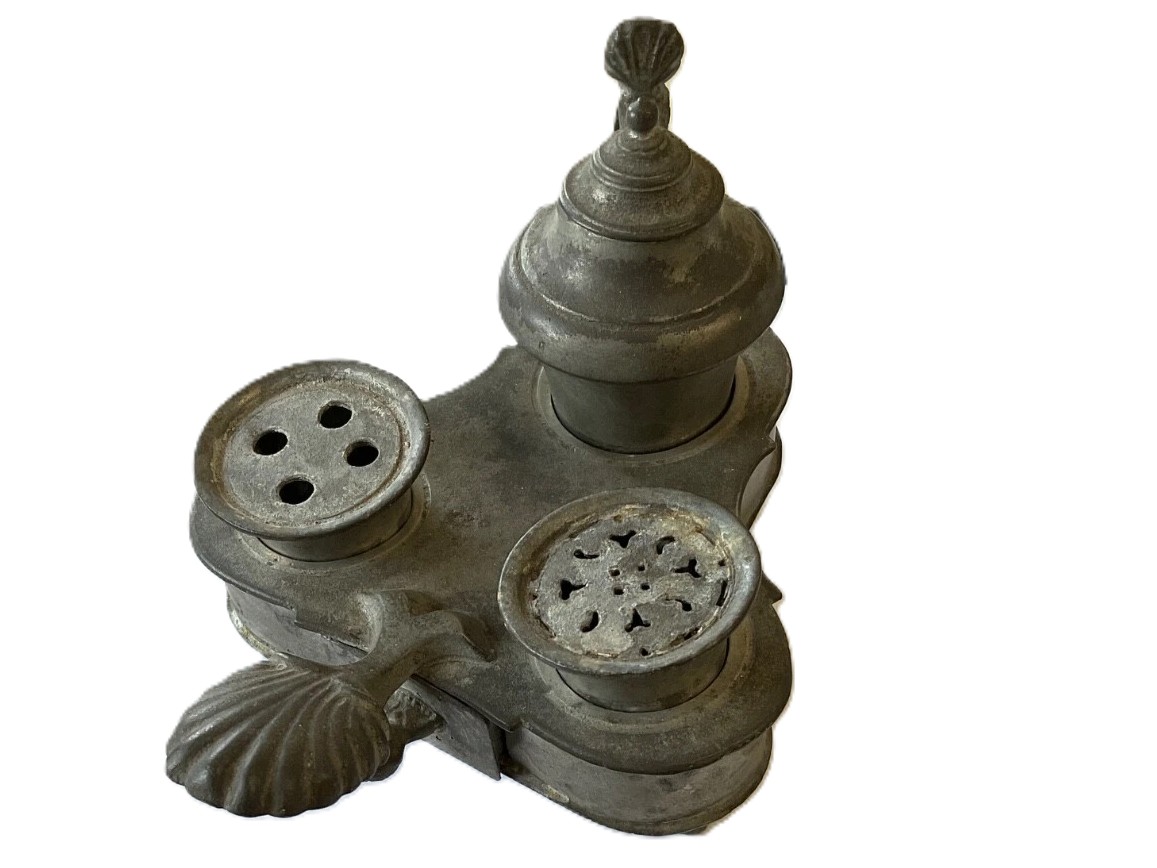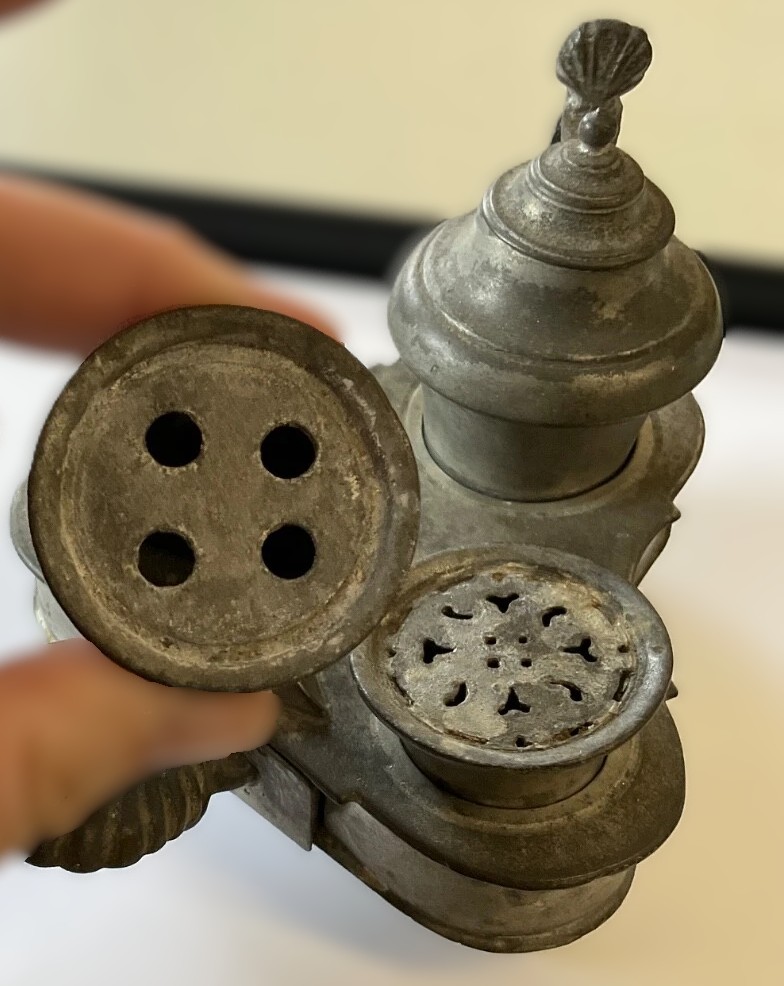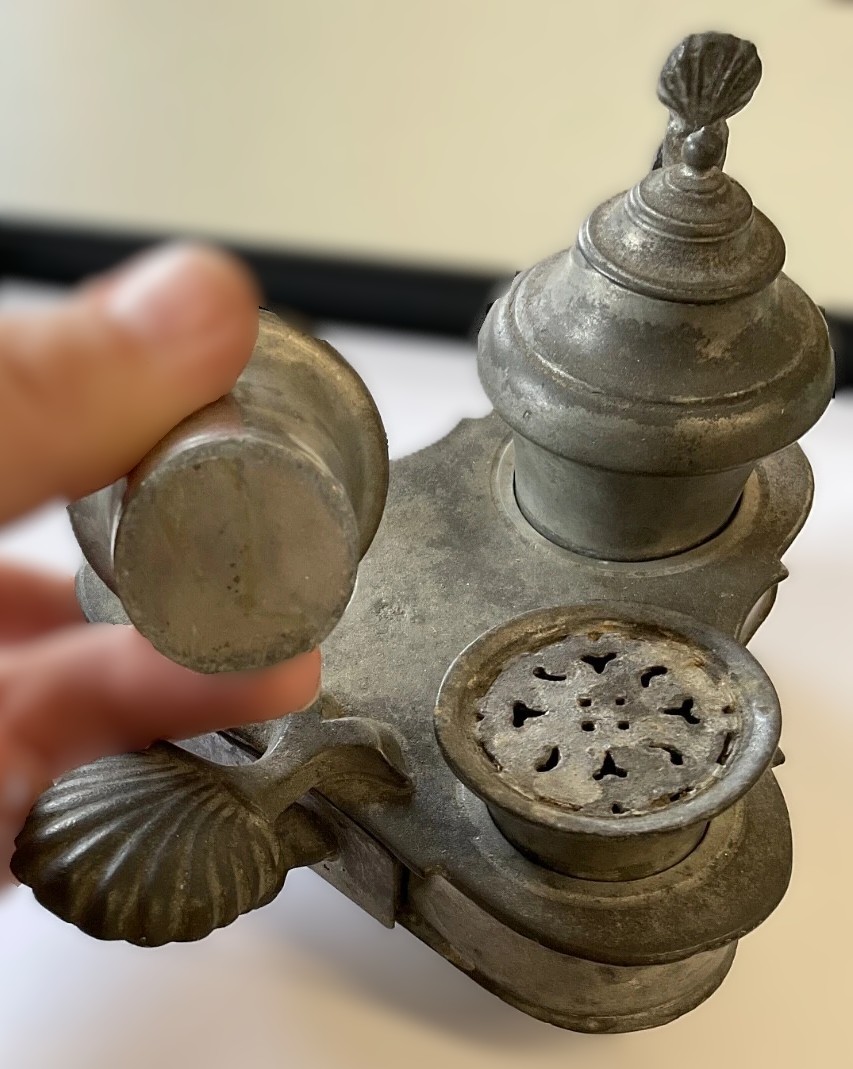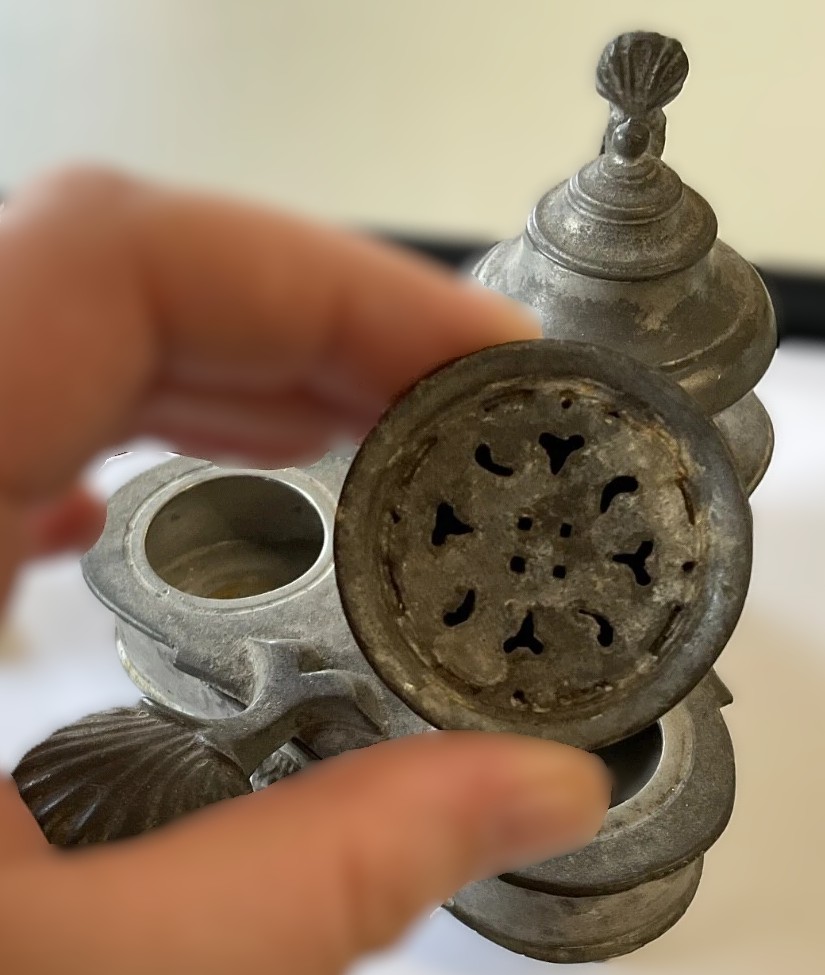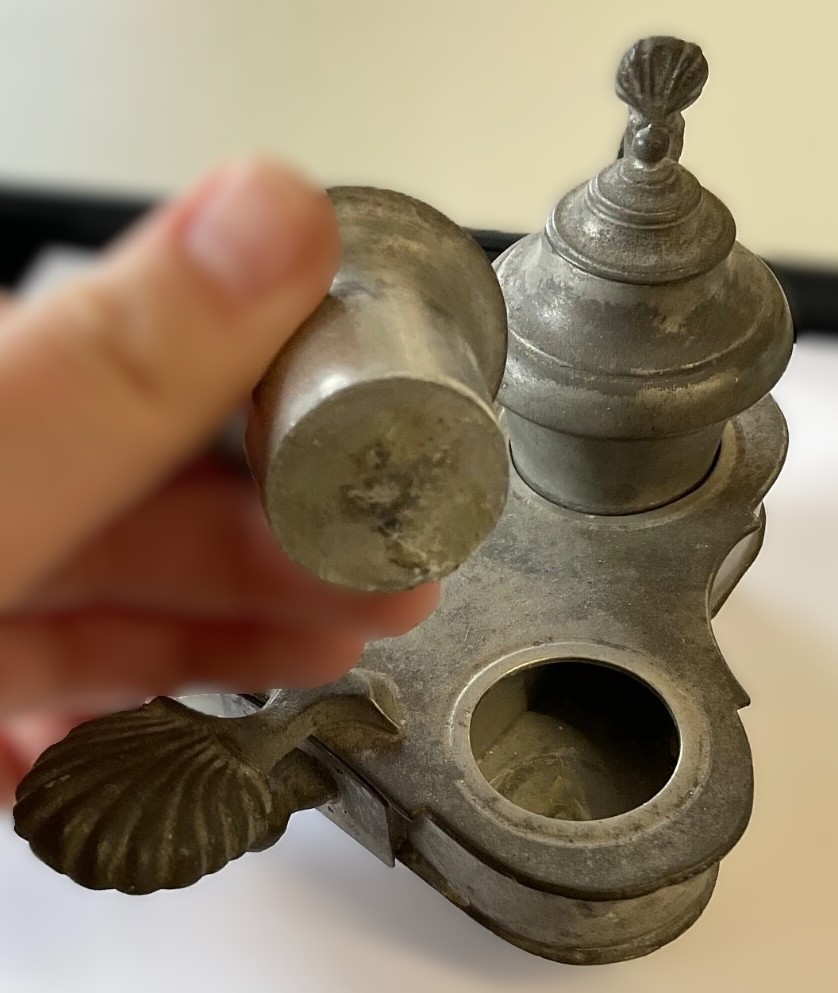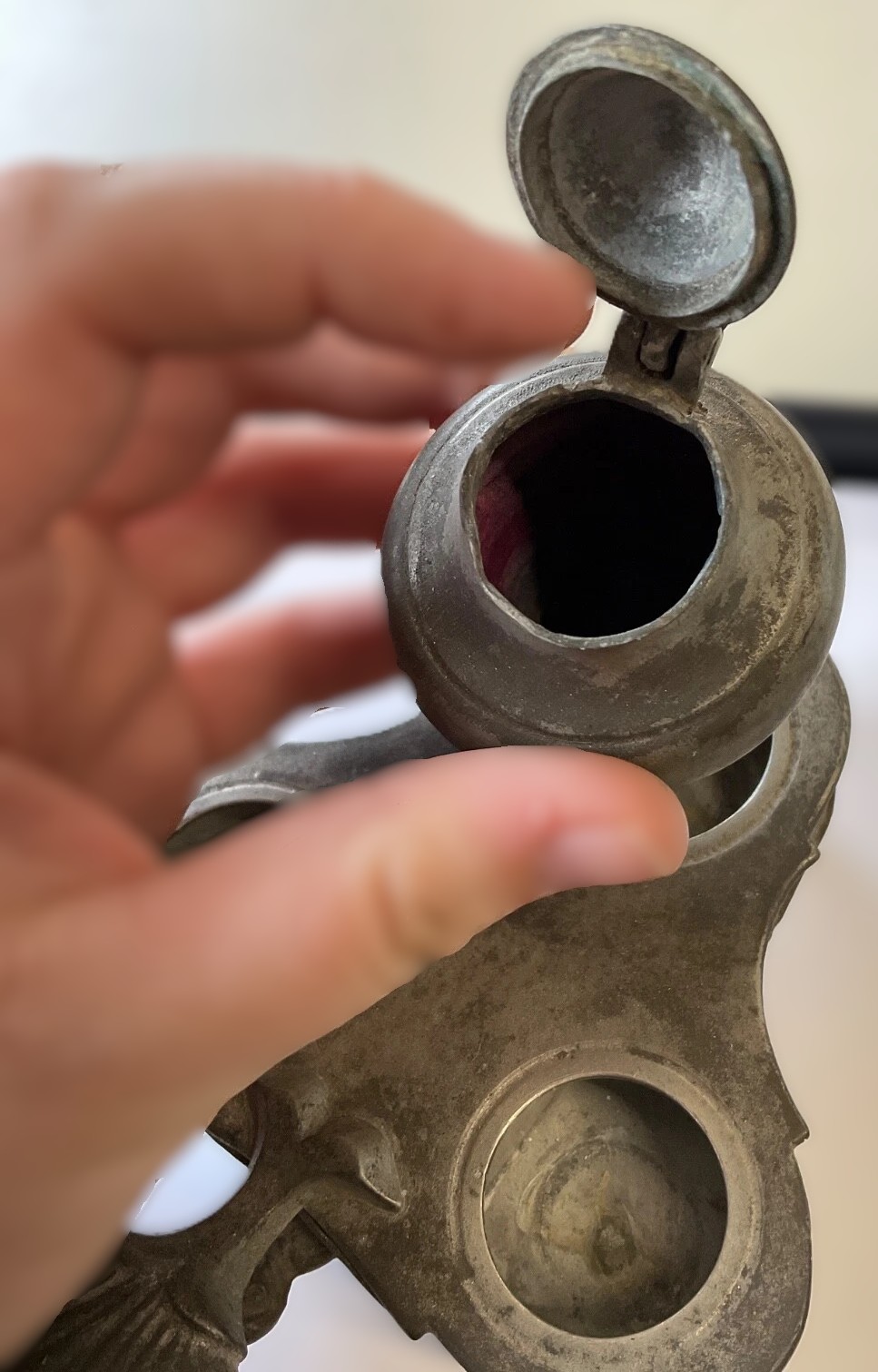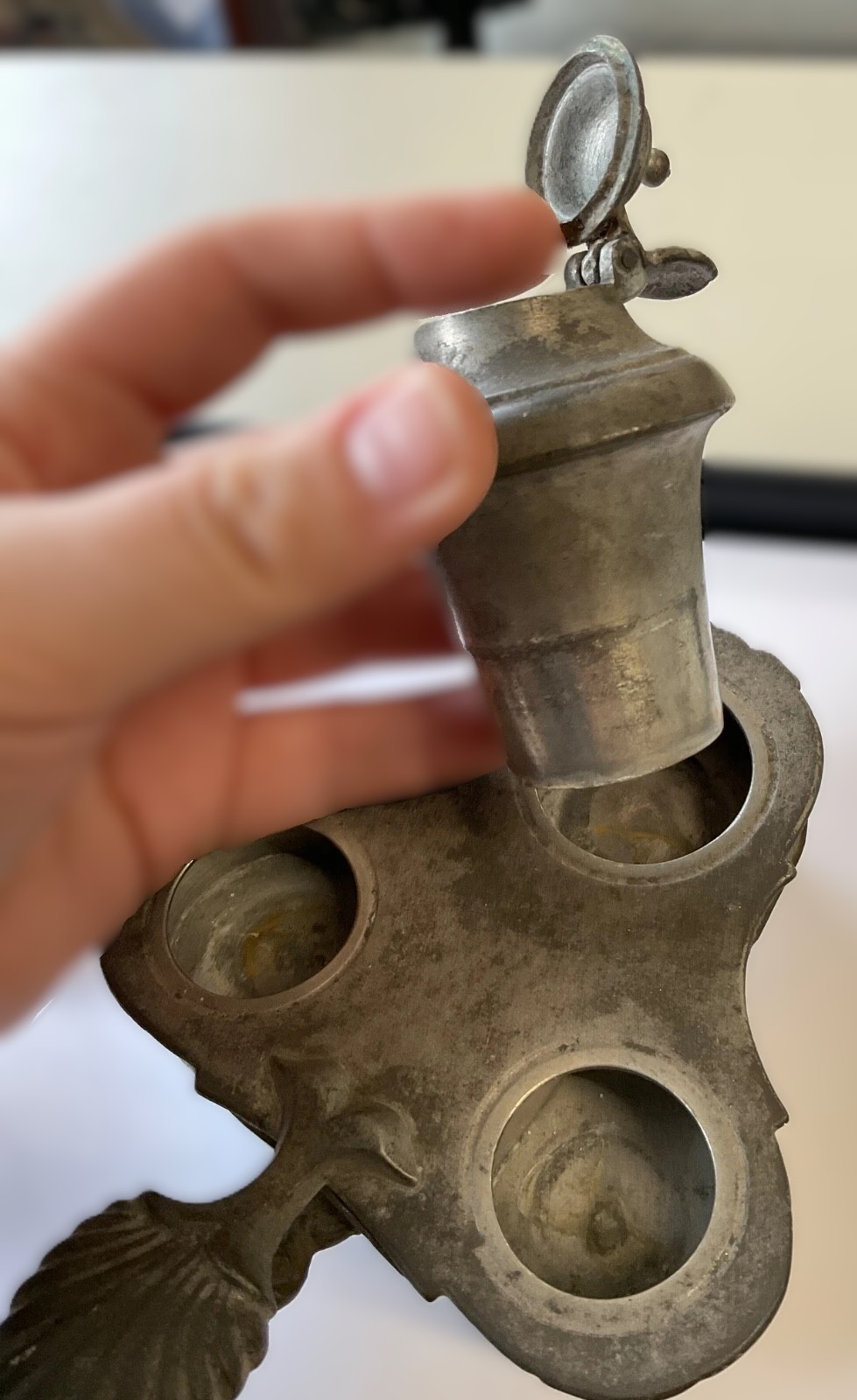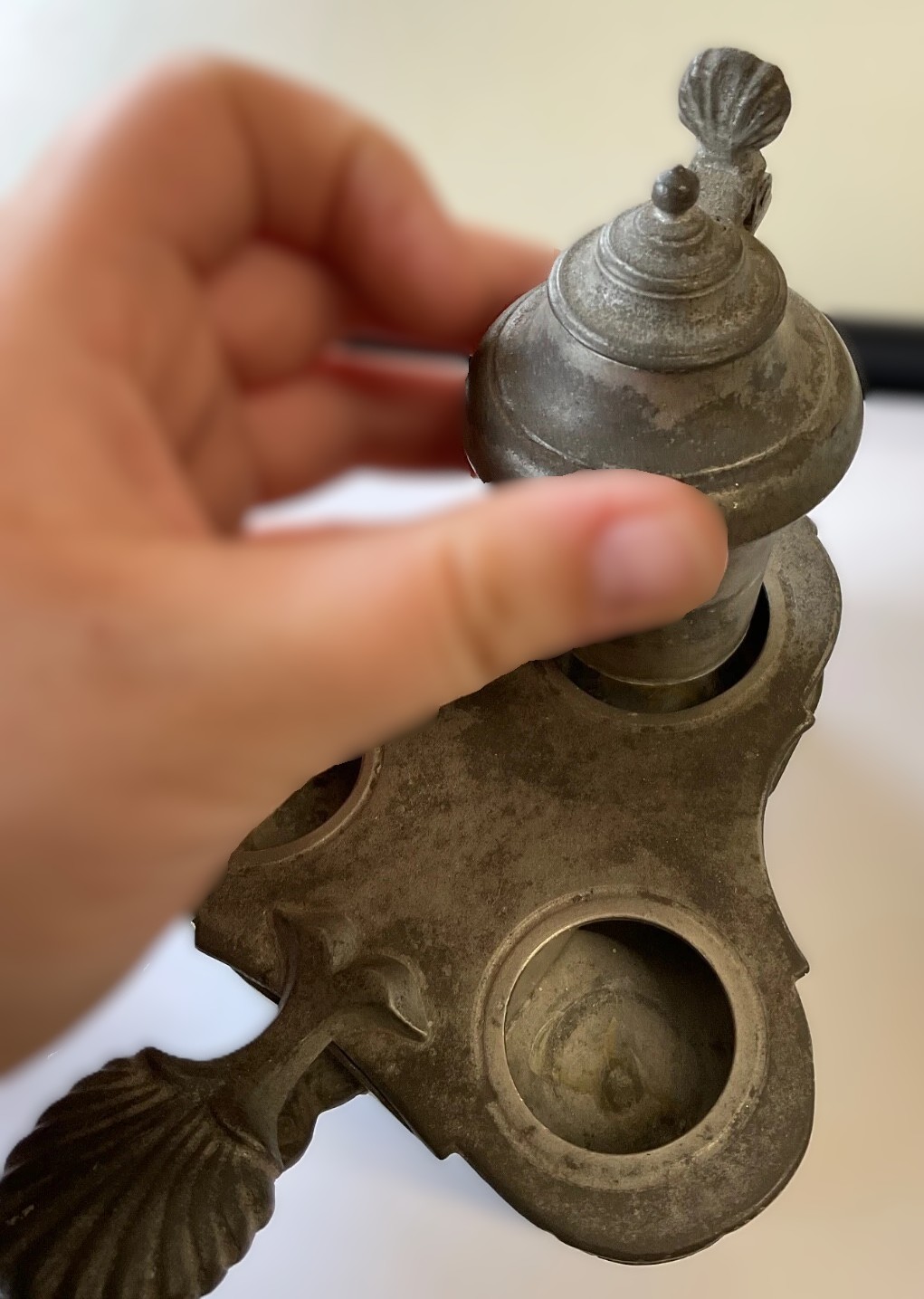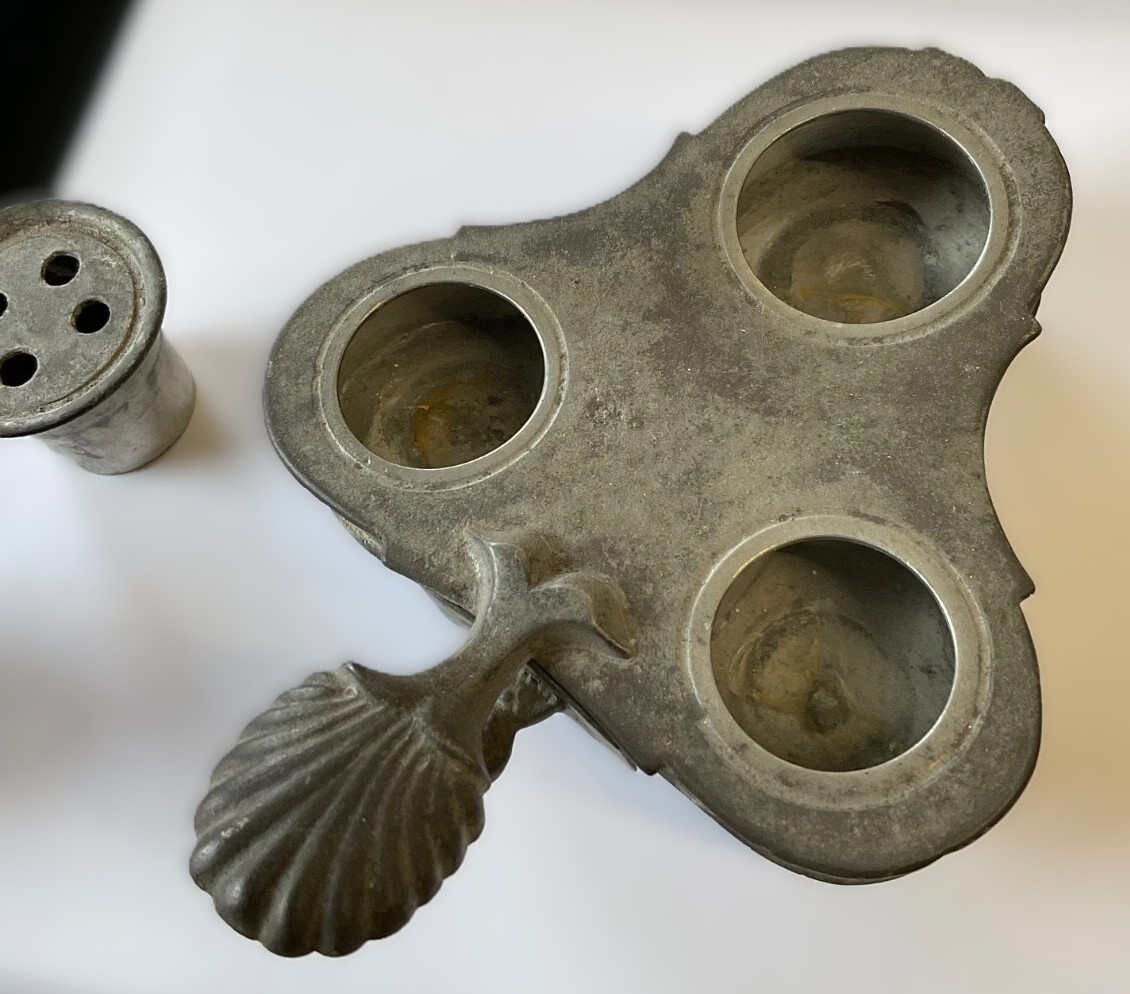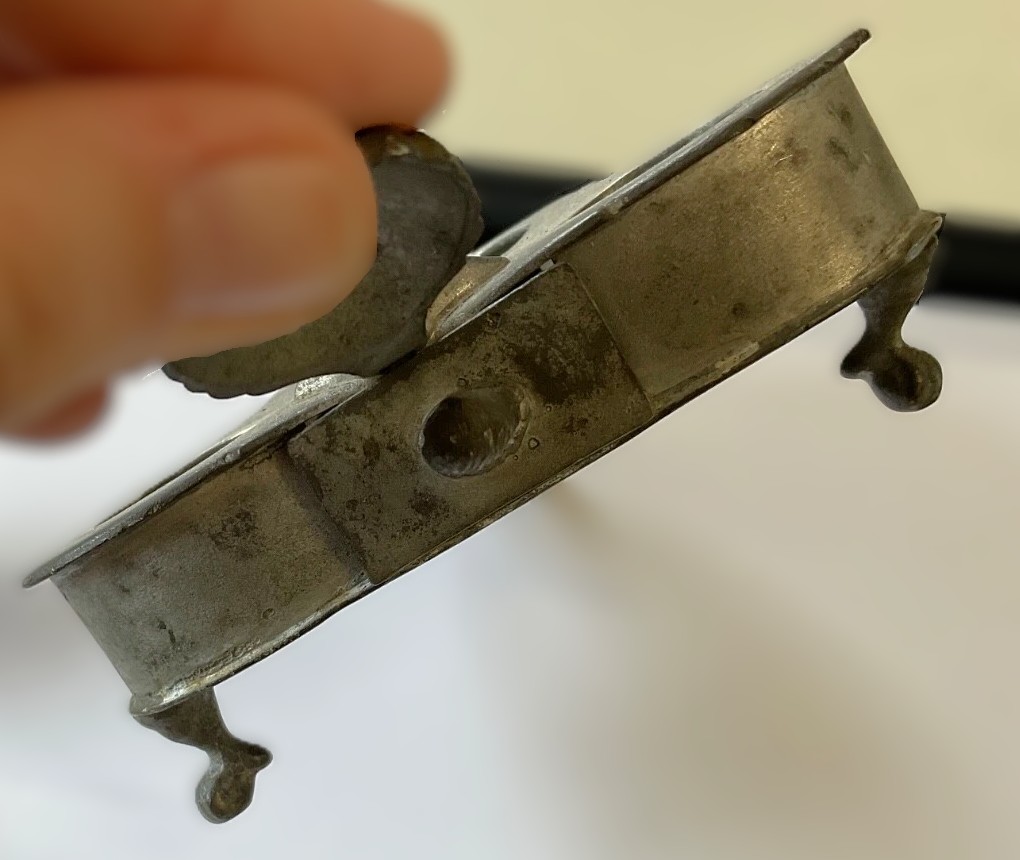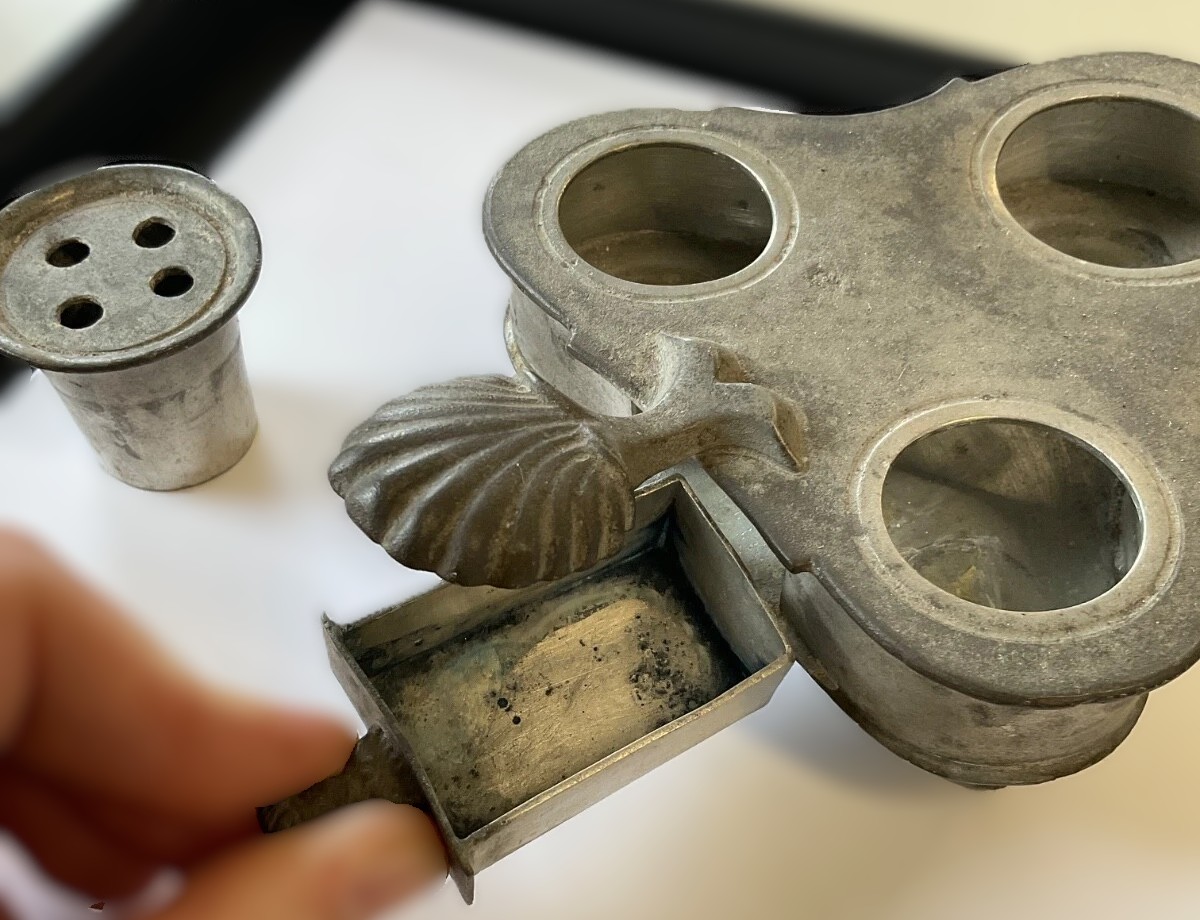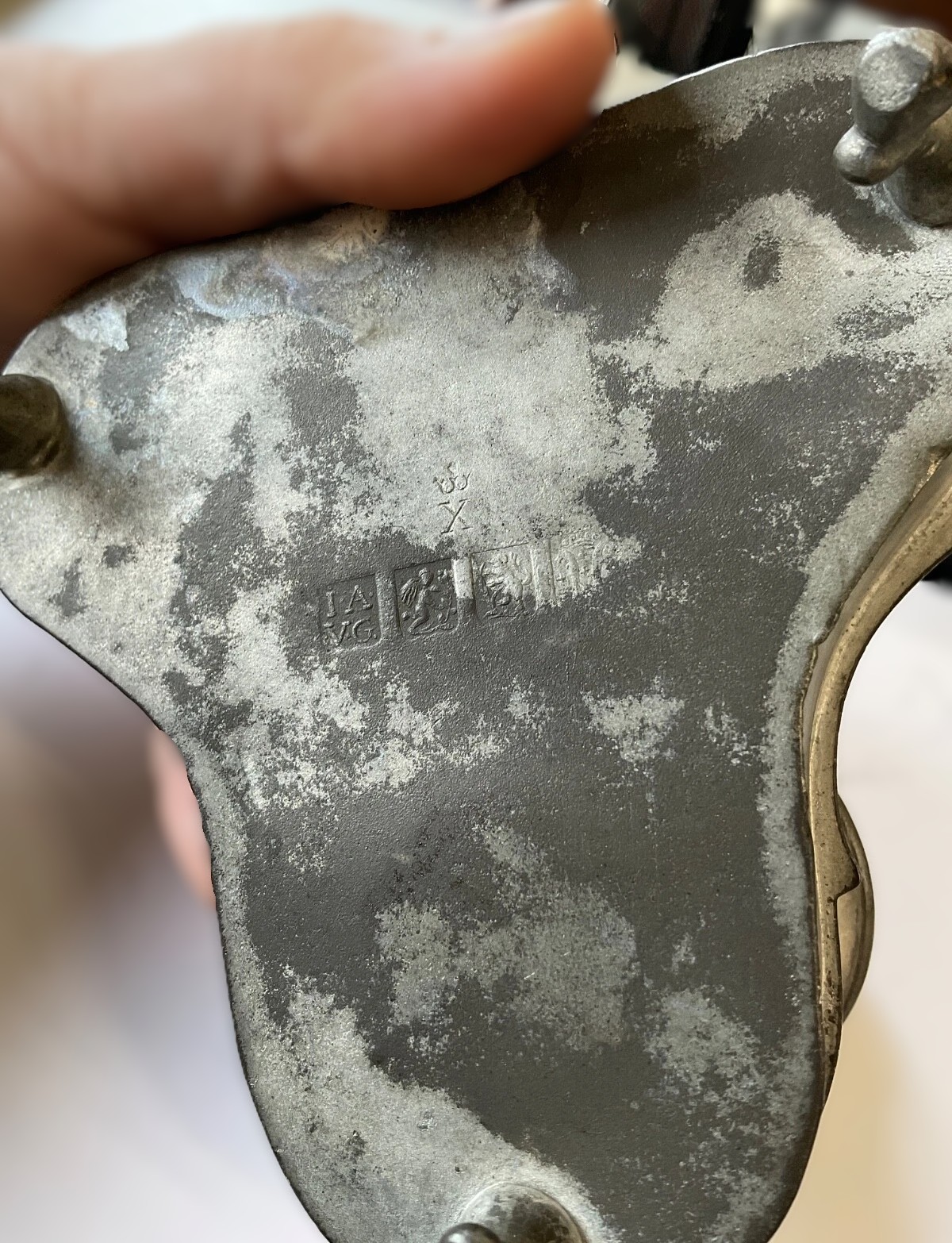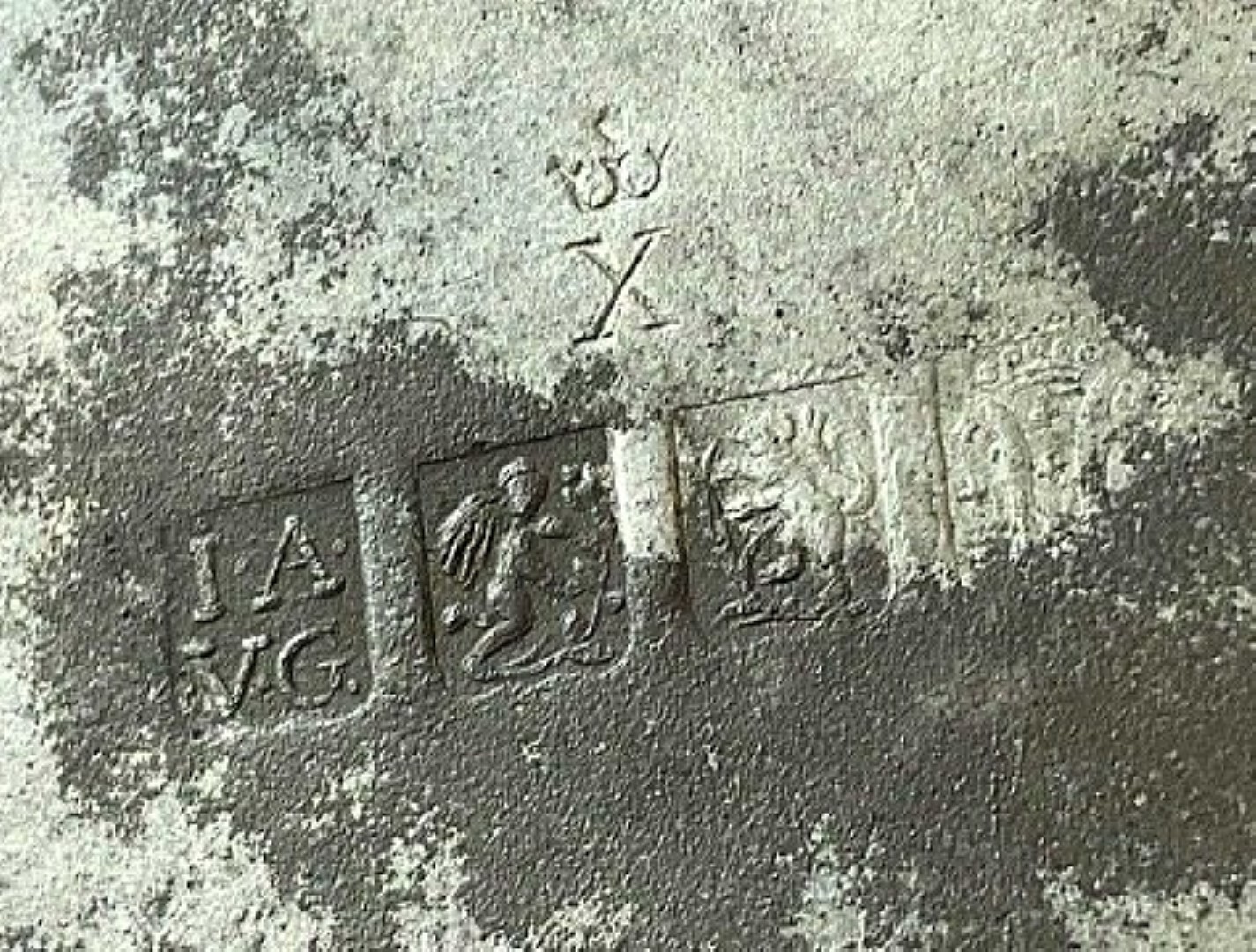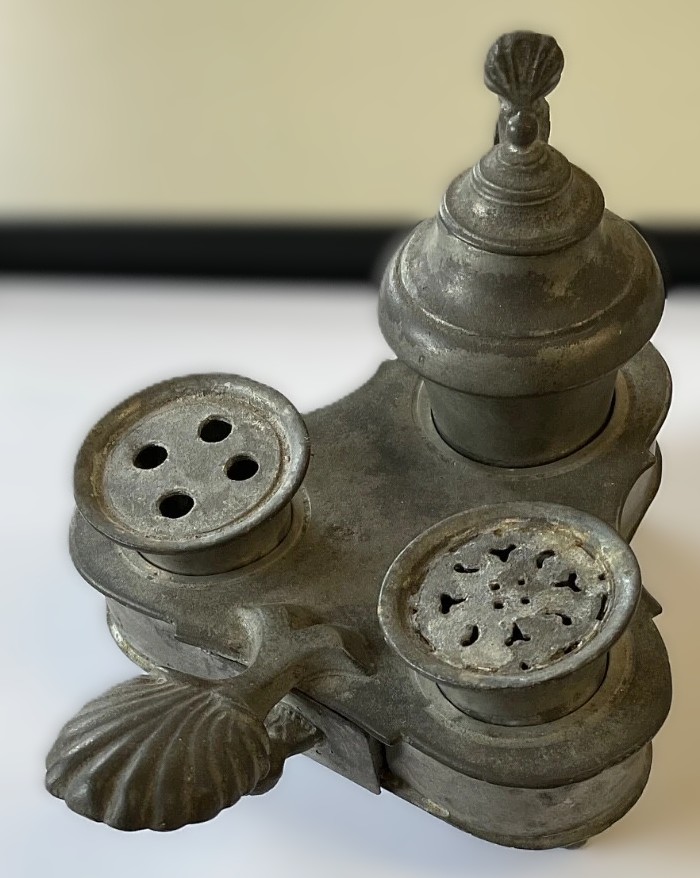
Pewter Inkstand
| Categories | Early - Primitive, Pewter / Tin |
| Material | Pewter |
| Markings | See Narrative |
| Manufacturer | Undetermined |
| Origin | England |
| Date or Era | circa 1800 |
This antique pewter inkstand is a single, integrated piece with multiple compartments for various writing tools.
Overall Form and Function: The inkstand is designed in a trefoil or three-lobed shape. It stands on three small, cabriole-style feet. The front of the stand features a decorative, scalloped shell-shaped handle. Beneath this handle is a pull-out drawer, intended to hold nibs, sealing wax, or other small writing implements.
The three compartments on the top surface of the stand serve distinct purposes:
- Inkwell: The top compartment is the inkwell. It has a hinged lid with a finial, which is also in the shape of a small shell, mirroring the main handle.
- Sander (Pounce Pot): The bottom-right compartment holds a removable insert with a decorative perforated lid. This is a sander, also known as a pounce pot. Before blotting paper was common, writers would sprinkle “pounce” (a fine powder like sand or cuttlefish bone) over wet ink to absorb excess moisture and prevent smudging. The perforated lid allowed for an even distribution of the powder.
- Quill Holder: The compartment on the left holds a removable insert with four circular holes. This is a quill holder, designed to keep freshly sharpened quills upright and ready for use.
Touchmarks/Hallmarks and Analysis: On the underside of the stand, there are several touchmarks or hallmarks.
- Crown over “X”: A prominent mark is a crown positioned directly above the letter “X”. This is a quality mark, indicating a higher-quality pewter alloy, which was common practice from the late 17th century onward.
- Pseudo-Hallmarks: Below the crown and “X” is a series of four marks, enclosed in small shields, which imitate the hallmarking system used for silver. From left to right:
- “I A” over “V G”: These are likely the initials of the pewterer, “I.A.V.G.” We have not been able to pinpoint the specific maker.
- Seated Angel: This mark features a seated or kneeling figure, likely an angel. This motif has been historically associated with both French and English pewterers.
- Lion: The third mark depicts a lion, possibly a lion rampant. Lion marks are frequently seen on European and English pewter and can point toward a particular region or maker’s guild.
- Worn Mark: The final mark on the right is too worn to be clearly identified but is another pseudo-hallmark.
Conclusion: The combination of the quality crown over “X” mark and the pseudo-hallmarks, along with the detailed craftsmanship of the inkstand itself (including the shell motifs, hinged lid, and multiple compartments), suggests that it is a well-made antique, likely of English, possibly dating to the 18th or 19th century.
Sold for $28 in July 2025
Content disclaimer. The information posted is the owner’s best knowledge and may not have been vetted by the SOIC. We welcome comments, corrections, and additions, working to make our website information comprehensive and accurate.
Join the Society of Inkwell Collectors (SOIC) – it’s free!
Founded in 1981 as a non-profit organization,
we are documenting inkwells (and accessories).
We’re here to help and inform!
